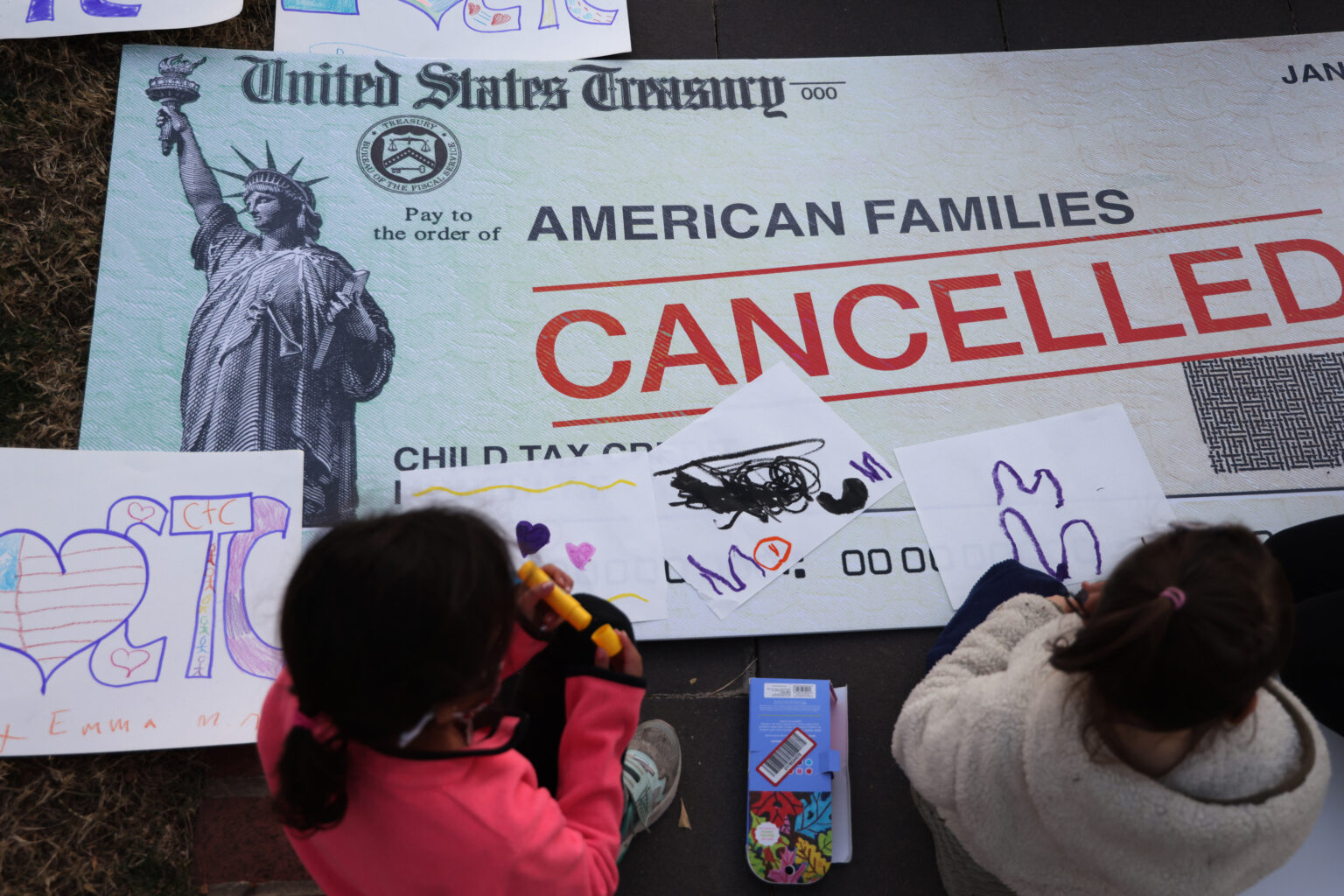The Child Tax Credit, or CTC, is one of the most popular policies in America. Both sides have spoken about expanding it; they’ve also accused each other of opposing it.
In August, Trump’s campaign called Vice President Kamala Harris a “hypocrite” for supporting CTC expansion, implying that she voted against then-President Trump’s Tax Cuts and Jobs Act which doubled the maximum CTC from $1,000 to $2,000. Weeks earlier, the Democratic Party slammed Republicans for voting against an expanded CTC.
At first, this might seem like a case of both parties trying to one-up the other on a voter-popular policy. Polling done this year by Data for Progress revealed that 98% of Americans consider childhood poverty in the US a problem. In turn, 71% of likely voters support expanding the CTC. Support is strongest among Democrats, but Independents and Republicans still firmly support the idea.
In fact, support for the CTC goes far beyond personal interest. As the Economic Security Project noted in 2022, only 28% of voters have children living with them, but they all still favor the CTC with 75% for it, and 19% opposed.
So, the majority of Americans both support the CTC and want to expand it. But what exactly is it?
According to US law, families can claim a tax credit based on their earnings and how many children they have. The maximum credit afforded by permanent law is $1,000 per eligible child. There are various stipulations for which children qualify. For starters, they must be a US citizen, national, or resident alien. The CTC starts to phase out when parents earn $75,000, or $110,000 if married.
In 2017, however, Trump signed into law his Tax Cuts and Jobs Act. As the name suggests, this law mainly slashed taxes for the wealthy. The Joint Committee on Taxation estimated that the tax cuts would increase deficits by over $860 billion over a decade.
Nevertheless, as the Bipartisan Policy Center explains, the TCJA did also expand the CTC. Among other changes, the maximum credit was doubled from $1,000 to $2,000. Moreover, the phase-in threshold was lowered, and the phase-out threshold was raised to $200,000, or $400,000 for married parents filing together.
Then, in 2021, President Biden and Democratic allies in Congress successfully enacted a temporary expansion of the CTC as part of their response to COVID. According to analysis of Census data from the Institute on Taxation and Economic Policy, the temporary expansion lifted 2.1 million children out of poverty. In other words, this one policy change cut child poverty in the US by almost half.
However, that expansion was only temporary and has since lapsed. Unsurprisingly, that lapse has caused families to slip back into poverty. Similarly, the Tax Cuts and Jobs Act’s CTC expansion will expire in 2025. This would undoubtedly plunge more families below the federal poverty line.
A return to the relatively diminished CTC is something almost no one wants — at least, according to the polls. But as the election nears, which side will do the most to avoid this unpopular outcome?
On the one hand, Trump and his team have issued vague promises. According to the Tax Foundation, one of Trump’s ideas is the extension of his TCJA, including the expanded CTC.
However, economists have warned that Trump’s other ideas — which include eye watering tariffs and plans to round up and deport millions of immigrants — would cost lower- and middle-class Americans thousands of dollars per year. Those additional costs would not only cancel out the expanded CTC, they would outweigh it by a large margin.
That being said, Trump’s pick for vice president, Sen. JD Vance, told CBS in August that he would “love to see a child tax credit that’s $5,000 per child” with no cutoff for the poorest and wealthiest families. “But you, of course, have to work with Congress to see how possible and viable that is,” Vance cautioned.
That’s where things get tricky. Trump and Vance might make promises, but the actions of their GOP allies in Congress may prove an obstacle.
Just weeks before Vance floated the $5,000 CTC, Senate Republicans blocked a bipartisan bill to expand it. All but three Republicans voted against the bill, while all Democrats voted for it. Notably, Senator Vance missed the vote; he was scheduled to visit the border.
Meanwhile, Vice President Harris has formally pledged to bring back the pandemic-era CTC expansion. According to the Tax Foundation, her plan would grant parents thousands of dollars more than currently available, upping the maximum value of the credit to $3,600. Harris has also proposed a one-time $6,000 tax credit for families welcoming newborns.
Ultimately, both sides have made promises to expand the Child Tax Credit. However, the formal pledges from Harris — backed by the recent voting record of her allies in Congress — seem more concrete than the vague ideas floated by Trump and Vance.
Trump did expand the CTC during his first term — so there is concrete reason to believe authentically he supports it. However, even if the Trump-Vance Administration has the political will to pursue a $5,000 CTC, whether they could rally their party to pass the bill through Congress is unclear.
Related: Student Lunch Debt Surges After Federal Funding Expires


